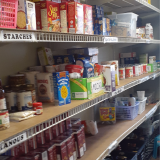Changes in Johnson County Agriculture: Interview with the Dieckgrafe Family, Nebraska
Story Narrative:
Introduction:
Johnson County Central High School’s FFA (Nebraska) and Striv students received a grant from the Johnson County Nebraska Historical Society for local students to record stories and conduct oral histories in conjunction with the Museum on Main Street exhibition, Crossroads: A Change in Rural America.
The exhibition was on view at the Historical Society from October 8 to November 12, 2021. In this interview, Jim and Kyle Dieckgrafe discuss their long-standing family farm in Nebraska.
Media Files:
-
Watch the Dieckgrafe's story (included open captions).
-
Audio version of the Dieckgrafe's story.



